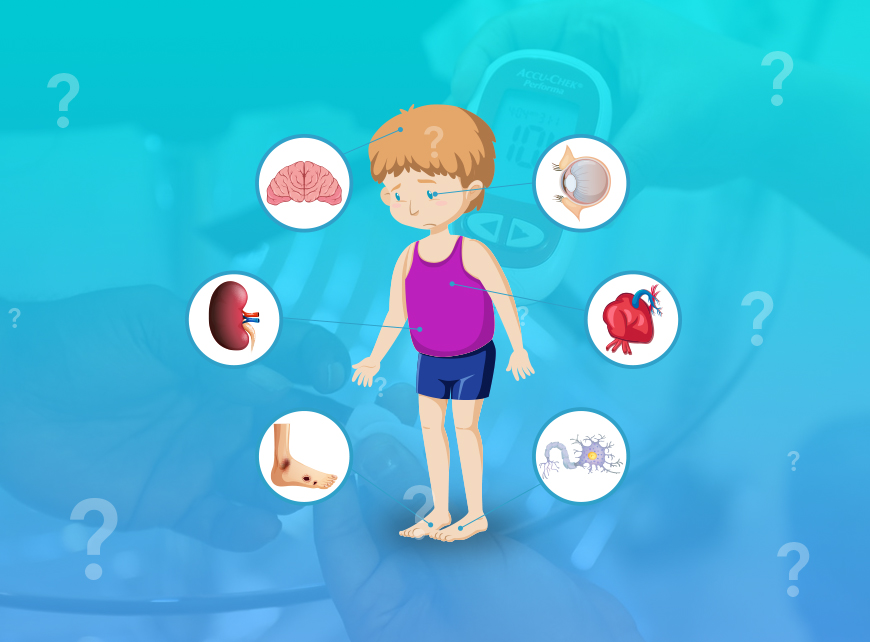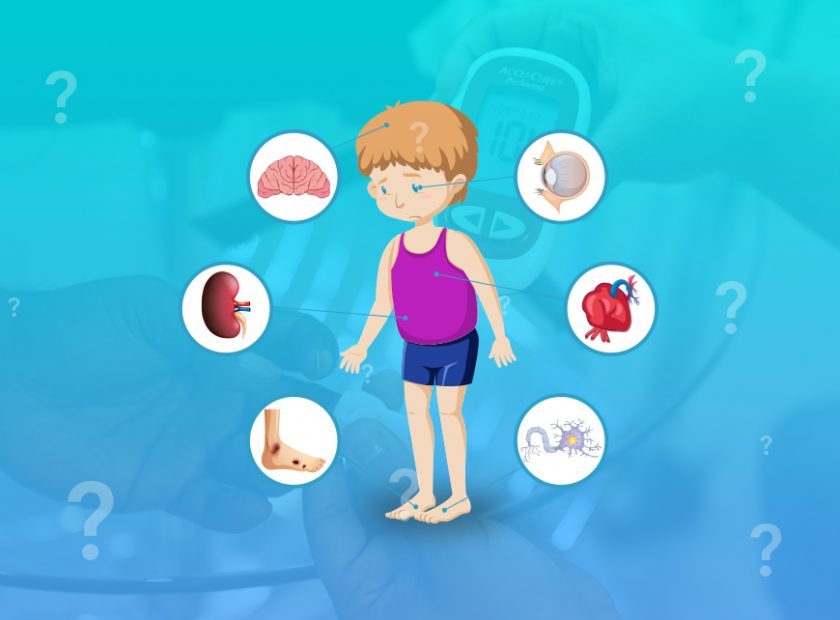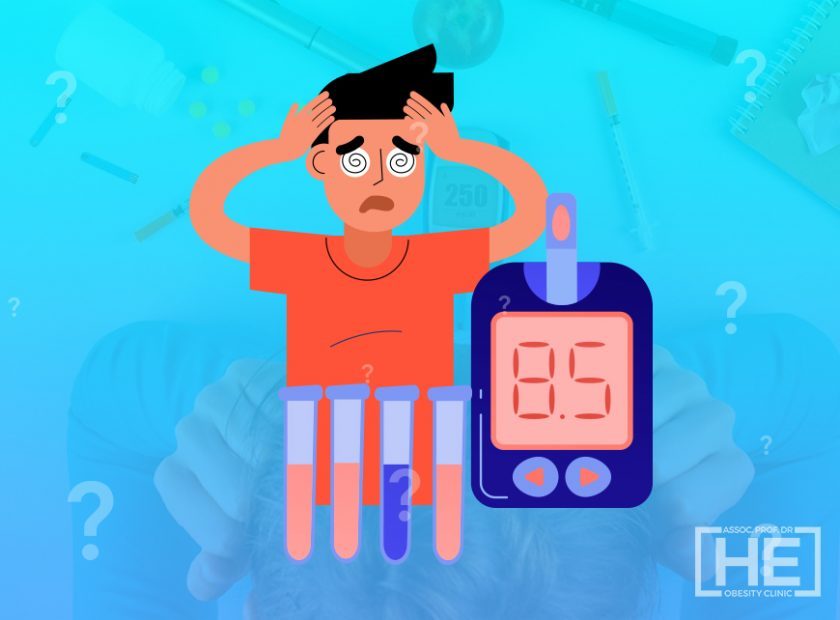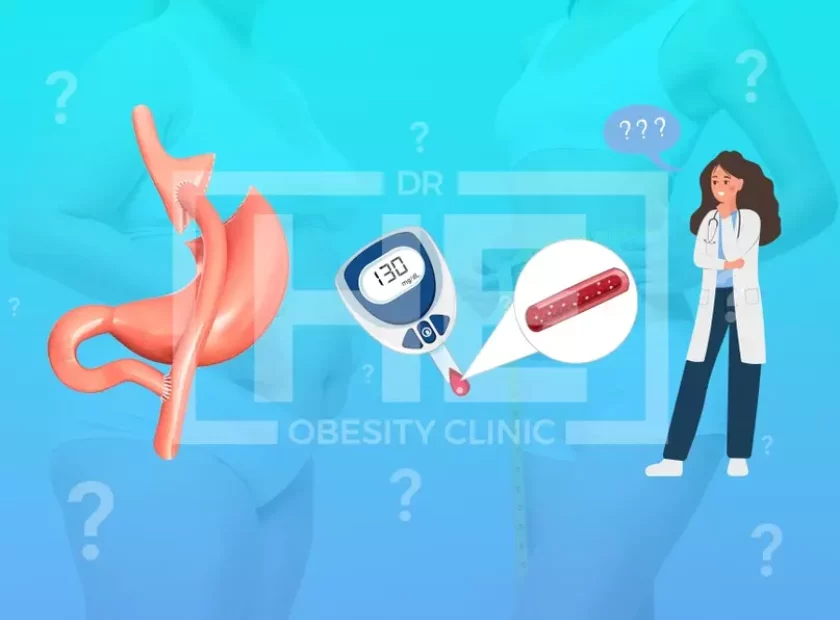
What Are The Symptoms Of Diabetes In Children? Type 1 diabetes, seen due to the absence or deficiency of the hormone insulin in the body, can manifest itself in a hidden and dangerous way, especially in children.
Diabetes, which disrupts the normal processes that allow the body to take advantage of nutrients and causes blood glucose levels to rise, can also occur due to viruses, toxins and certain foodstuffs that cause the immune response to be disrupted in beta cells, as can be seen for genetic reasons.
Although it is usually known as adult disease, diabetes is a disease that can also occur in children and adolescents of all ages. Diabetes is a disease that occurs as a result of a lack or resistance to the hormone insulin, which allows our body to use sugar, and is accompanied by a height in blood sugar.
Symptoms of diabetes in children occur when there is a deterioration in the working mechanism of the hormone insulin. Diabetes in children occurs as a result of insulin deficiency and occurs with an increase in blood sugar. Insulin is secreted from the pancreatic gland in our body.
It allows blood sugar to be used by body cells. Carbohydrates that we take with food are converted into simple sugars in the intestines and absorbed into the blood. After feeding, when blood sugar begins to rise, insulin is released, allowing sugar to be used or stored by body cells.
In patients with diabetes, this procedure cannot be performed, blood sugar remains high. Unable to use sugar, cells go hungry and break down fats and proteins to provide energy. As a result, weight loss occurs in the child.
How Does Diabetes Manifest Itself?
Diabetes manifests itself in individuals with three main symptoms. These can be listed as a feeling of eating more than usual and not getting enough, frequent urination, a feeling of dryness and sweetness in the mouth, and, accordingly, a desire to drink excess water.
If a person has diabetes, fasting blood sugar (AKS) measurement or Oral glucose tolerance test (OGTT) is determined. AKS measurement of 100-125 mg/dl is a hidden diabetes (pre-diabetes) signal. 126 mg/dl or more indicates the presence of diabetes.
In OGTT, blood sugar value is important 2 hours after taking glucose-rich liquid. If the blood sugar measurement for the second hour is 140-199 mg/dl, hidden diabetes is diagnosed if it is 200 mg/dl or higher.
Diabetes in Children
Diabetes is a disease caused by the absence or deficiency of the hormone insulin in the body. This disease disrupts the normal processes that allow the body to take advantage of nutrients and causes blood glucose levels to rise too high.
As the cause of the disease, viruses, toxins and certain food substances are mentioned, which together with genetic predisposition cause the immune response to be disrupted in beta cells. Cow’s milk is of great importance in the formation of diabetes in children.
Exposure to cow’s milk in children under the age of 1 has been shown to increase the incidence of diabetes. For this reason, it is recommended that children with diabetes, especially in first-degree relatives, should not be given cow’s milk for as long as possible.
Preservatives in foods and smoked foods are also factors that cause autoimmune diabetes. Although diabetes in children is usually caused by a genetic predisposition, it is very important to eat a healthy and balanced diet with organic foods to delay the onset of the disease.
Foods containing genetically modified additives should be avoided. It should be noted that the disease can also be triggered by viral infections and very severe stresses.
Why does a child get diabetes?
Although diabetes in children is a rare disease, its most important feature is due to the fact that it is a chronic disease. Diabetes is one of the chronic diseases seen in childhood. If diabetes cannot be controlled in children, kidney failure, vision loss, nerve cells damage, early cardiovascular diseases are observed at an early age.
In children, as in adults, the most common signs are urination very often, drinking a lot of water, and an increase in appetite, although it is not always seen. Families first say that children start drinking more water than usual, they constantly keep water bottles with them, and they are not saturated with water, as if they are only fed with water.
A lot of urination is evident during the day when children go to the toilet with remarkable frequency. For this reason, other findings should be investigated in children who begin to ask permission to go to the toilet during the lesson.
How can I prevent my child from getting diabetes?
Diabetes mellitus in children and infants can have many causes. Children often have diabetes called type 1 diabetes, in which the body becomes unable to produce insulin. This, in turn, can cause a sudden drop or increase in blood sugar in children, or even cause a coma.
The most important among the causes of diabetes in childhood is overweight. Being overweight is also one of the causes of obesity in children. Decongestants are also among the causes of obesity in children. That is, both diseases are interconnected.
Eating ready-made foods, staying still, consuming solid foods causes your children to gain weight, this condition also causes diabetes. We need to prevent children from overeating, eating snacks, and, in particular, from consuming frozen foods. Thus, a possible diabetes disease is prevented.
Symptoms of Diabetes in Children
As a result of insufficient insulin’s inability to introduce glucose into the cell, blood glucose gradually increases. In this case, the body goes down the path of removing blood glucose from the kidneys. In this way, glucose begins to appear in the urine.
Because fluid loss from the kidneys also occurs along with glucose excretion, the body’s need for fluid also increases with frequent urination, and drinking a lot of water is observed.
As a result of insulin deficiency, the body begins to use fat due to the fact that glucose cannot enter the cell and cannot be used in energy production. By burning fat, weight loss and ketone bodies accumulate in the blood.
This causes nausea, vomiting and loss of appetite, and ketones are seen in the urine. Common Symptoms of Diabetes in Children are as follows:
- Drinking a lot of water
- Multiple urination
- Night urinary incontinence or night urination
- Overeating but not gaining weight, weight loss
- Weakness, fatigue, desire to sleep
- The smell of rotten apples in the mouth
- Abdominal pain, nausea and vomiting
- Rapid breathing
In patients presenting with symptoms such as too much urination, too much water, too much eating, weight loss, or with ketoacidosis or coma in later periods, glucose monitoring in the urine, blood sugar levels determination, sugar loading test and hemoglobin A1C diagnostic methods are applied.
The presence of glucose in the urine suggests various diseases, especially diabetes. If diabetes is due to the presence of glucose in the urine, blood sugar is 180 mg/dl. Or it means it’s above.
If diabetes is not treated at this stage in children, in this case, symptoms of advanced complications can also be observed. The name of this condition in medicine is diabetic ketoacidosis.
Diabetes Treatment in Children
Diabetes in children is different from Type-2 diabetes in adults. In adult diabetes, insulin production of the pancreas continues, so it is possible to treat it with diet and or oral diabetes medications. But in Type-1 diabetes, insulin production is very insufficient, since the insulin-producing cells of the pancreas are damaged to a full extent.
For this reason, children with diabetes should take insulin by injection from outside. Children should live a completely normal life with a balanced diet and a regular sports – activity plan on the side of insulin to treat diabetes.
Despite all the advances in diagnosis and treatment of diabetes, it is not yet a completely curable disease. Today, thanks to advanced insulins and blood glucose measurement methods, children with diabetes can lead a normal life like their peers.
He can eat and drink more freely than before. She can participate in all kinds of social and sporting events. However, unlike other peers, they have extra obligations to do.
It is essential to pay attention to things like measuring your blood glucose from your finger at least 4 times a day, and having to take insulin injections 4 times a day and have to be careful about some things with your food. Diabetes treatment in children is progressing as a team effort.
First, the treatment is performed by a specialist in pediatric endocrinology. However, this issue is being studied with specialist diabetes nurses. Getting support from nutritionists. In addition, psychologists allow families and children to easily survive the process after being diagnosed with the disease.




